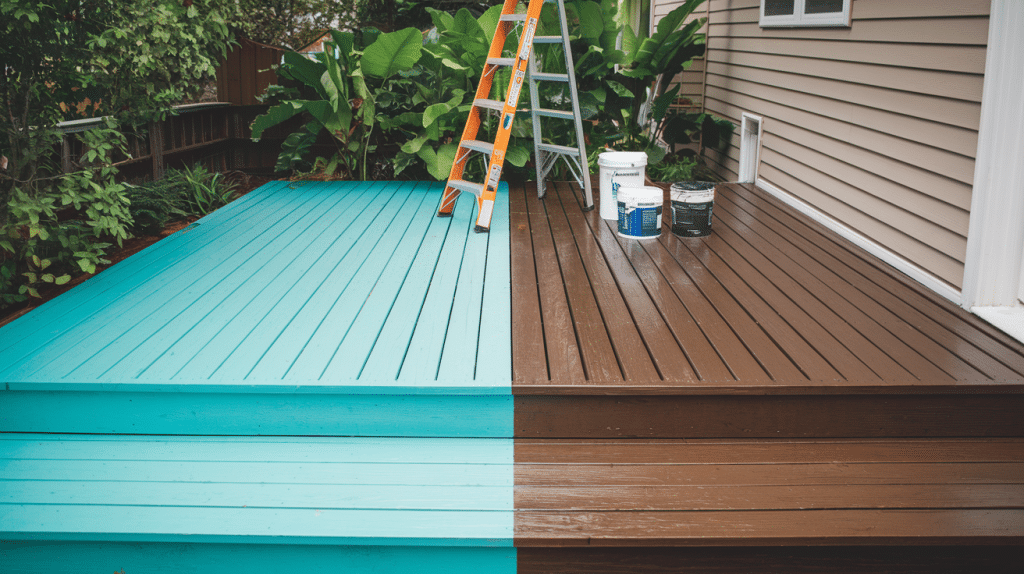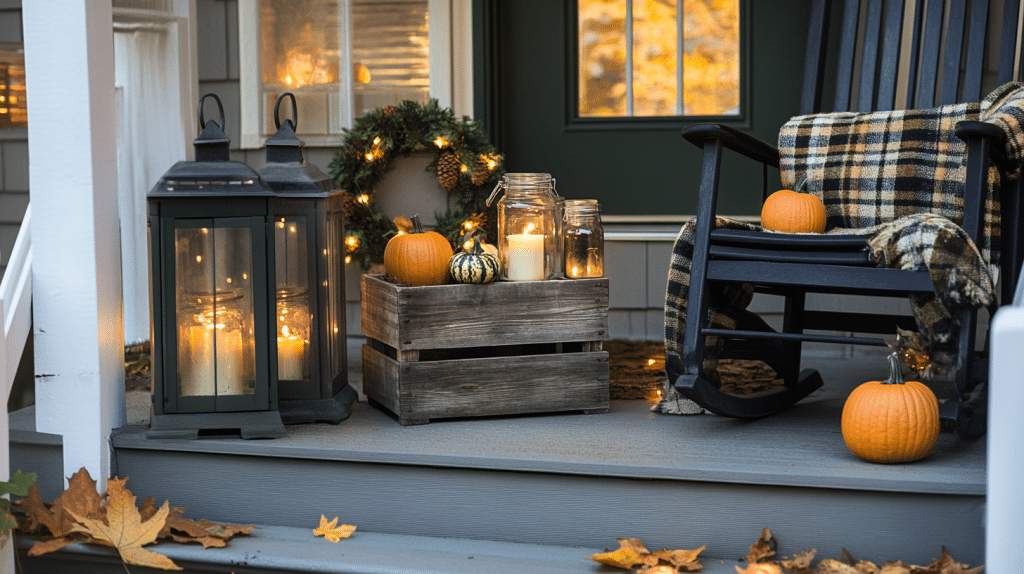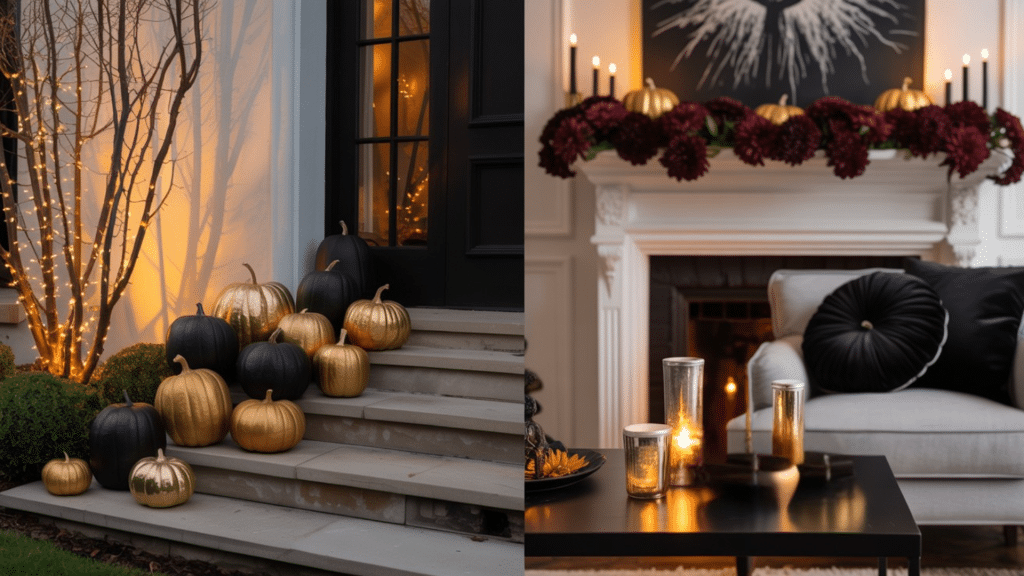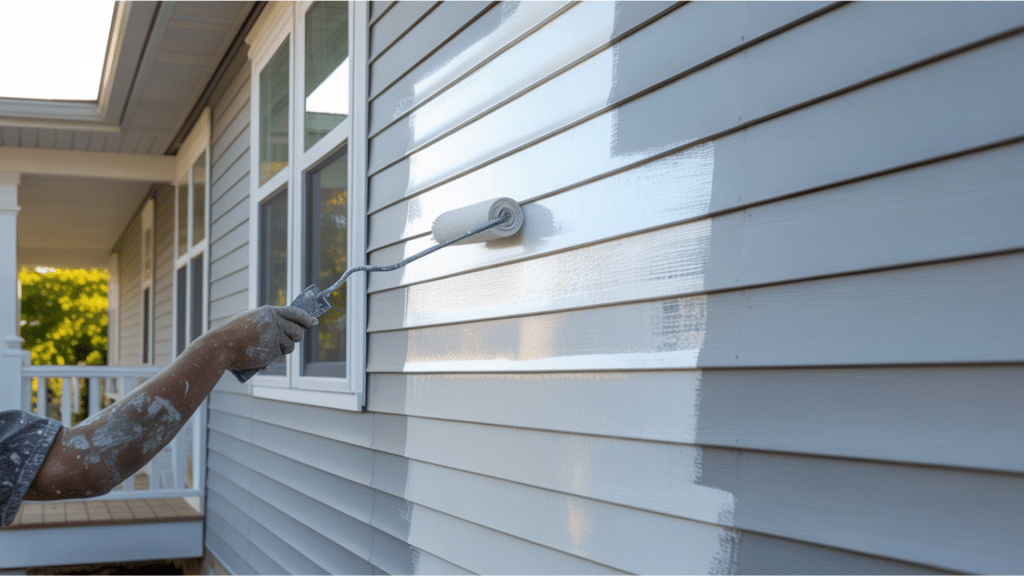Is your deck looking worn? Choosing between paint and stain can feel overwhelming. You want your outdoor space to look great and last for years, but conflicting advice makes decisions tough.
I’ve been there, too. After researching and testing both options on my own deck, I found that each has its own set of pros and cons.
Paint offers full coverage and more color options but might chip over time. A stain shows off the wood grain and needs less prep but may require more frequent touch-ups.
In this blog, I’ll explain everything you need to know about painting or staining your deck. By the end, you’ll feel confident about which option makes the most sense for your specific situation and needs.
Understanding the Basics of Painting vs Staining
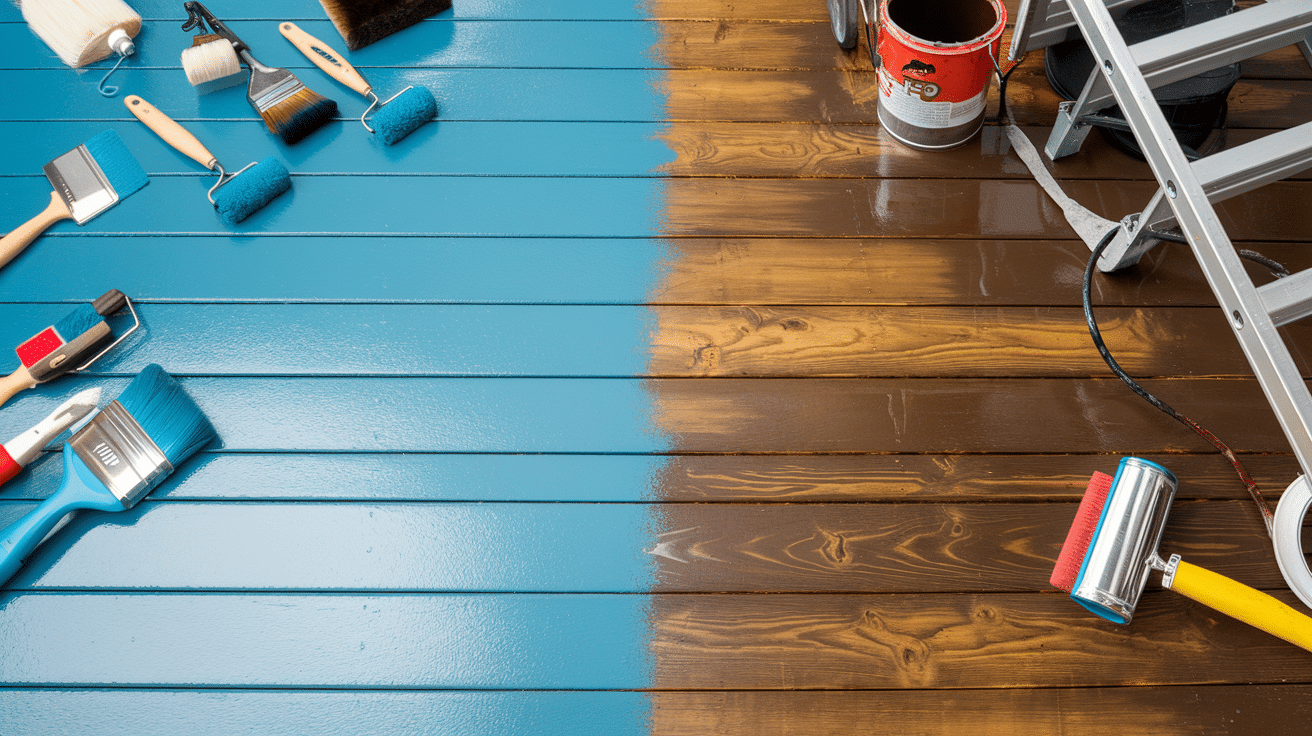
Paint creates a thick, solid layer that sits on top of your deck wood, completely hiding the grain while offering strong protection against moisture and UV damage.
It comes in countless colors and lasts 5-10 years, but it can chip and peel with heavy foot traffic. Once painted, a deck is difficult to return to its natural state.
By contrast, stain soaks into the wood rather than coating it, preserving the natural grain and texture. It allows the wood to breathe better, won’t chip or peel like paint, and is easier to apply and maintain.
However, stain offers fewer color options, provides less protection against harsh elements, and typically needs reapplication every 2-4 years.
Your choice depends on your priorities: Paint for maximum protection and color options, or stain for natural beauty and easier maintenance.
When making your decision, consider your deck’s age, condition, usage level, and desired look.
Painting vs Staining: What is Better for Your Deck
Choosing between painting and staining your deck depends on factors like durability, aesthetics, and maintenance. This guide compares both options to help you make the best decision for your outdoor space.
| Aspect | Painting Your Deck | Staining Your Deck |
|---|---|---|
| Durability | Provides a thick protective layer; resists moisture & UV. | Less durable, requires more frequent reapplication. |
| Maintenance | Easier to clean, but may peel and crack over time. | Requires more maintenance, especially re-staining every few years. |
| Aesthetic | Offers a wide range of colors, hides imperfections. | Enhances natural wood grain, more subtle finish. |
| Application | More complex, requires multiple coats and preparation. | Easier and quicker to apply; fewer coats needed. |
| Breathability | Less breathable, may trap moisture under the paint. | More breathable, allows wood to “breathe,” and reduces rot. |
| Appearance | Non-natural look, covers wood texture. | Natural: Highlights the wood’s natural grain and texture. |
| Longevity | It can last longer if properly maintained. | Less longevity, may need reapplication every 2-3 years. |
| Protection | Offers better protection against harsh elements. | Provides good protection but is not as strong as paint. |
| Environmental Impact | It can contain more chemicals and may require more harmful prep. | Generally more eco-friendly, with fewer chemicals. |
| Cost | Higher upfront cost due to materials and prep work. | Lower cost, quicker application saves time and labor. |
The Pros and Cons of Painting a Deck
Painting your deck is a major decision that affects both its appearance and longevity. Before you open that paint can, it’s worth understanding the full picture.
Pros of Painting a Deck
- Complete coverage: Paint forms a thick, protective shell that covers imperfections, cracks, and blemishes in older wood. This makes it perfect for giving new life to aging decks.
- Superior protection: The solid film created by paint provides an excellent defense against moisture, UV rays, and the elements. This barrier helps prevent water damage and wood rot.
- Color options: With paint, your color choices are virtually unlimited. You can match your home’s trim, create contrast, or choose bold colors that would be impossible with stain.
- Longer lasting finish: A quality paint job can last 5-10 years before needing a refresh, compared to 2-4 years for most stains.
- Smoother surface: Paint creates a more uniform, smooth finish that some homeowners prefer for comfort and cleanliness.
Cons of Painting a Deck
- Peeling and chipping: Paint sits on the surface rather than soaking in, making it prone to peeling, chipping, and cracking under foot traffic and furniture movement.
- Difficult to reverse: Once you paint a deck, going back to stain or natural wood is extremely difficult and labor-intensive.
- More prep work: Painting requires thorough cleaning, sanding, and priming for good adhesion. Shortcuts here lead to quick failure.
- Slippery when wet: Some paints can create a slick surface when wet, creating a potential safety issue.
- Traps moisture: If water gets beneath the paint (through cracks or unsealed edges), it can get trapped and cause rot that’s hidden from view until significant damage occurs.
- Maintenance challenges: When it’s time to repaint, you’ll need to scrape failing paint, sand rough spots, and prime before applying new paint—a much more involved process than refreshing stain.
When considering paint for your deck, think about your climate, how much foot traffic the deck receives, and how much maintenance you’re willing to perform.
For many homeowners, the decision comes down to whether they prioritize appearance and color options or ease of maintenance and a more natural look.
The Benefits and Drawbacks of Staining a Deck
Staining your deck offers a different approach to protection and aesthetics compared to painting. Here’s what you should know before choosing this option.
Benefits of Deck Staining
- Enhances natural beauty: It showcases the wood grain and texture instead of covering them up.
- No peeling or chipping: Stain soaks into wood rather than sitting on top, so it won’t flake off over time.
- Simpler maintenance: When it’s time to reapply, just clean and coat—no scraping or sanding needed.
- Better traction: Provides more grip when wet compared to many painted surfaces.
- Allows wood to breathe: Lets moisture escape rather than trapping it, reducing rot risk.
Drawbacks of Deck Staining
- Shorter lifespan: Typically needs reapplication every 2-4 years versus 5-10 years for paint.
- Limited color options: Mostly restricted to wood tones and natural shades.
- Won’t hide flaws: Imperfections, damage, and discoloration remain visible.
- Less protection: Doesn’t create as robust a barrier against elements as paint does.
- May absorb unevenly: This can result in a patchy appearance, especially on older wood.
Staining works particularly well for newer decks in good condition and for homeowners who appreciate wood’s natural appearance.
It’s also ideal for those who prefer simpler maintenance procedures, even if they must be performed more frequently.
How to Properly Paint or Stain Your Deck for Longevity
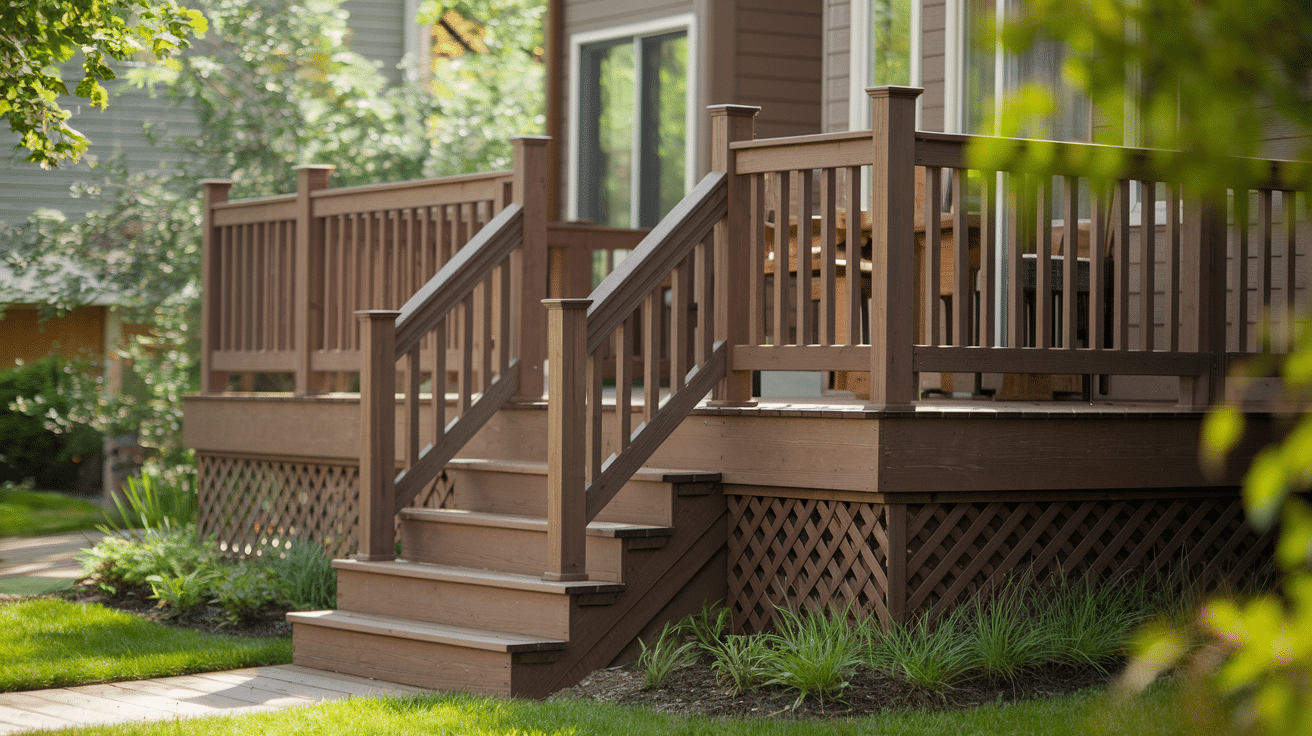
Want your deck finish to last twice as long? The key isn’t just what product you use but how you apply it. Here’s a straightforward guide to get professional-quality results that stand up to weather and foot traffic.
Deck Preparation: The Foundation of Success
-
Clean your deck completely: Remove all dirt, mold, and old finish. Use a deck cleaner and scrub brush for best results. A pressure washer works too, but keep it below 1500 PSI to avoid damaging the wood.
-
Make necessary repairs: Replace any rotted boards and hammer down raised nails before finishing. Small cracks can be filled with exterior wood filler if you’re painting (not necessary for staining).
-
Sand the surface: For paint, sand with medium-grit sandpaper (60-80 grit) to create texture for better adhesion. For staining, sanding helps open the wood pores for better absorption.
-
Check the weather forecast: Apply your finish during dry weather with temperatures between 50-90°F. Avoid extremely humid days and direct sunlight during application.
Best Application Techniques
For Painting Decks:
- Apply an exterior primer designed specifically for decks
- Choose 100% acrylic latex paint labeled for deck/floor use
- Use thin coats (2-3 thin coats last longer than 1 thick coat)
- Paint in the direction of the wood grain
- Allow 24-48 hours between coats
For Staining Decks:
- Choose the right stain type: transparent (shows most grain), semi-transparent (some color with grain visible), or solid (most color, less grain)
- Apply stain with a quality brush, roller, or pad applicator
- Work in small sections of 2-3 boards at a time
- Remove excess stain within 15 minutes to prevent a sticky surface
- Most stains need only one coat (check product instructions)
Tips That Make a Big Difference
- Test your deck’s readiness by sprinkling water on it—if it soaks in rather than beads up, the wood is ready to accept stain.
- Stir your paint or stain frequently during application (never shake the stain)
- Paint or stain the edges of the deck boards first, then the flat surfaces
- Allow proper drying time before placing furniture back on the deck (72 hours minimum)
- Apply a water repellent sealer annually for additional protection
By following these steps, you can extend your deck finish’s life from the typical 2-3 years to 5-6 years or more.
This saves you money and protects your deck from moisture damage, UV rays, and premature aging.
Factors to Consider When Choosing Between Paint and Stain
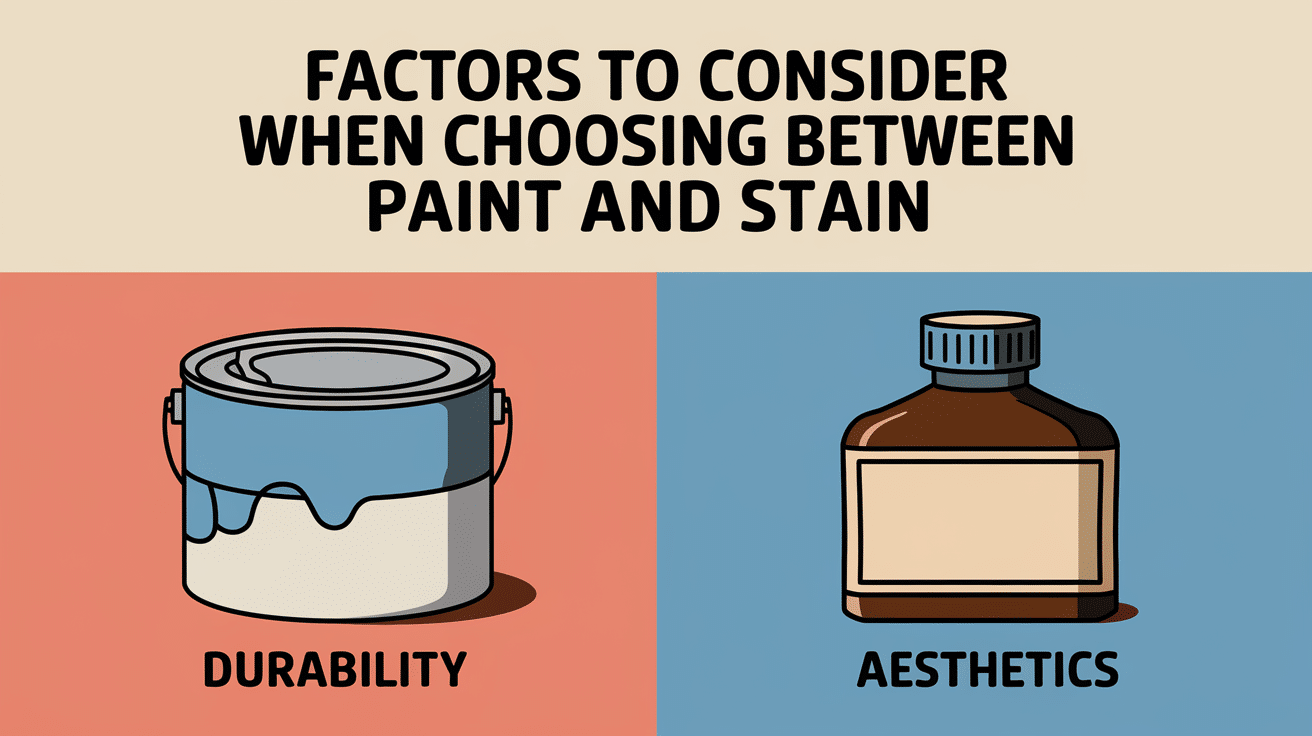
Choosing between paint and stain for your deck depends on factors like wood type, deck condition, climate, and desired aesthetics.
Consider maintenance needs, cost, and durability to make the best decision for your outdoor space.
-
Wood Type: Different woods react differently to paint and stain; for example, pressure-treated wood often adheres better to stain, while older or damaged decks may benefit from the coverage of paint.
-
Deck Condition: Staining is ideal for well-maintained decks to highlight the natural grain, while painting is better for older decks or those with visible imperfections that need to be hidden.
-
Climate: Harsh weather conditions, such as high moisture or intense sun, may affect the longevity of paint and stain differently, influencing your choice based on regional climate.
-
Aesthetic Goals: If you want to preserve the natural look of the wood, stain is the best option, but if you prefer a bold, uniform color, paint offers more color variety.
-
Maintenance Commitment: Stain requires reapplication every few years, while paint lasts longer but may require more upkeep due to peeling and chipping.
-
Cost: Staining is generally more budget-friendly in terms of both materials and labor, whereas painting may have a higher upfront cost but could last longer with proper care.
The Bottom Line
The choice between painting and staining your deck comes down to your specific situation. Both options protect your deck, but they do so in different ways and with different maintenance needs.
Consider your deck’s current condition, your local climate, and how much maintenance you’re willing to do. A new deck might benefit from stain’s natural look, while an older deck might need paint’s covering power.
What’s your next step? Take a close look at your deck’s condition and consider what matters most to you, natural wood beauty, color options, or maintenance frequency. Then, select the option that best suits those priorities.
Ready to start your project? Make sure to follow the proper preparation steps – they’re just as important as the finish itself!


